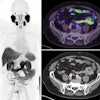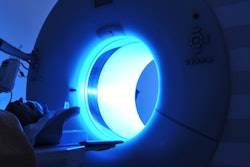Dear AuntMinnieEurope Member,
Online training formats are particularly suitable when it comes to radiation protection, according to researchers in Madrid. Most participants appreciate the flexible format and availability of accreditation, while educators find they have been able to expand the course contents and cover more topics.
How does the group organize its game-changing virtual scheme? You can learn more in this week's top article, which you'll find in the Molecular Imaging Community.
The concept of dual-energy CT was first described in the early 1970s, and it came of age in radiology in 2006, when dual-source CT systems were introduced. The clinical applications of dual-energy CT are continuously expanding, as shown by novel research from Germany. Learn more in the CT Community.
Disharmony is rife in U.K. healthcare right now. Ongoing pay disputes and strike action by hospital consultants, junior doctors, and radiographers are causing widespread disruption in the National Health Service. Also, the recent government decision to expand the community diagnostic centers in England has received a mixed response.
In other news, a Dutch survey has shown that women with low-risk ductal carcinoma in situ (DCIS) prefer active surveillance with mammography rather than conventional treatment. Novel decision aids must be developed to enable patients and clinicians to make informed decisions about the management of low-risk DCIS, the authors say.
Finally, please make sure you check out our article about a new study conducted at LMU University Hospital in Munich, Germany. The investigators found that PET helps clinicians predict survival outcomes for patients with brain tumors, and they published their findings on 3 August in the Journal of Nuclear Medicine.



















